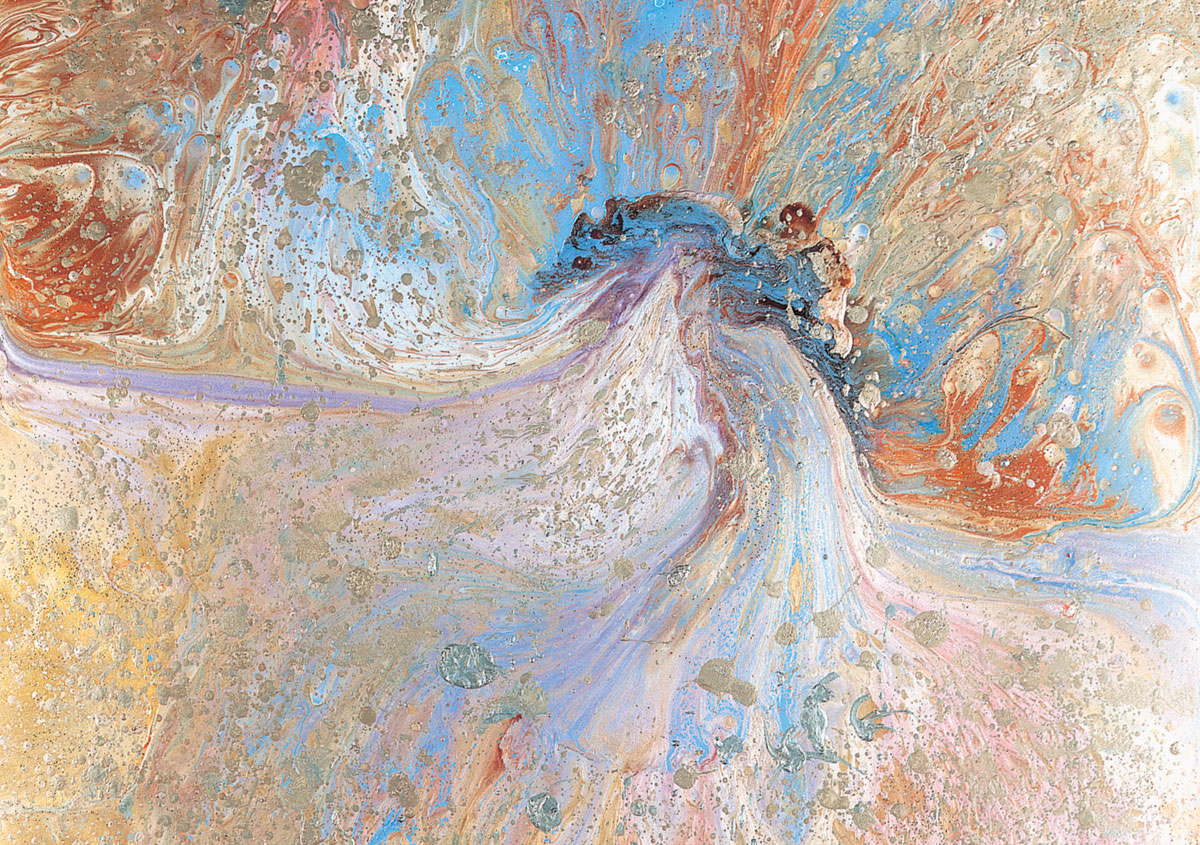FOREWORD TO THE ALCHEMY OF POSSIBILITY

Reading The Alchemy of Possibility brought back a specific memory of Aldous: Three days before he died he was speaking with extraordinary vitality, in spite of his heart-breaking weakness, about a “new kind of literature, different from what anybody has ever written.” “How different?” I asked. Aldous, with a wonderfully happy expression in his voice, unexpectedly like his strong, vital self answered: “By bringing it all in! ”
I have the impression that in The Alchemy of Possibility, Carolyn Mary Kleefeld also aspires to bring it all in. And indeed she has brought many dimensions into this book of prose, poetry and painting. She has brought the abundance of her talent and the intensity of her passion. The result is a journal that reaches many levels of being— hers, ours and our world’s.
Kleefeld touches on psychological, spiritual, ecological and physiological topics. One is her cry for liberation. To attain it, “all it requires,” she says, “is either faith or exhaustion.” In that statement, she presents the spiritual and psychological parts of herself—but then, the impartial observer adds, “and usually both.”
Like all nature-mystics, Carolyn has a symbiotic relationship with nature. The Alchemy of Possibility might remind us, not through statistics but through poetic prose, that the Golden Rule is to be applied to every tree, every rock, every creature and every thing on the planet. The poem is you, is me says it all.
There is a numinous presence in her identification with nature. Often in Kleefeld’s artwork there is a mingling of contrasting feelings: The painting, Must Flee the City, has a mocking quality and, at the same time, evokes compassion for the bewildered, lonely woman attempting to escape the crushing lunacy of the city.
In writing freely about her amorous, spiritual and mundane life, Kleefeld offers, I believe unintentionally, a sort of effective intangible therapy for “surfing the waves of existence.”
Each chapter of The Alchemy of Possibility connects a theme from The I Ching, and from Tarot Commentaries, with writing and painting by the author, presenting a challenging, interwoven tapestry spanning across centuries and spaces.
The Alchemy of Possibility is to be kept nearby and enjoyed slowly, and if you have a question in mind, open it at random, and you might—just might—find an answer. There is no promise of finding the answer. In fact, Kleefeld writes, “The answer is to be so still that the questions stop”—a charming way to put the reader on the spot.
 One of the most touching and enlightening passages in the
book describes Carolyn’s dynamic relationship with her father, a modern real-world tycoon,
who had a grandiose and successfully realized materialistic vision. Both daughter and father
are visionaries and have been
estranged for years by their divergent visions. The daughter, victim and beneficiary of her
father’s accomplishment, is now strong and independent. She goes to her ailing father and
finds the old giant—who, through his enterprises has once fed thousands of people—now so
weak as not to be able to feed himself. With intelligent dedication and through scrupulous
research, the daughter finds
and uses the best medical and psychological means to assist her father through that
all-important transformative period before and into death. All past conflicts vanish—father
and daughter, at one time two roaring rivers in a warring country, now softly melt into that
quiet sea of compassion always open to all who ask.
One of the most touching and enlightening passages in the
book describes Carolyn’s dynamic relationship with her father, a modern real-world tycoon,
who had a grandiose and successfully realized materialistic vision. Both daughter and father
are visionaries and have been
estranged for years by their divergent visions. The daughter, victim and beneficiary of her
father’s accomplishment, is now strong and independent. She goes to her ailing father and
finds the old giant—who, through his enterprises has once fed thousands of people—now so
weak as not to be able to feed himself. With intelligent dedication and through scrupulous
research, the daughter finds
and uses the best medical and psychological means to assist her father through that
all-important transformative period before and into death. All past conflicts vanish—father
and daughter, at one time two roaring rivers in a warring country, now softly melt into that
quiet sea of compassion always open to all who ask.
- Laura Archera Huxley
Los Angeles, California
August 1997
The inspiration for the
Alchemy Oracle comes from Carolyn Mary Kleefeld's book,
The Alchemy of Possibility: Reinventing Your Personal
Mythology
Click to read more or purchase at Amazon


 To begin, simply formulate a question for which you seek guidance.
To begin, simply formulate a question for which you seek guidance. The
The  Atman, Meme, Nabis, Pankosmion, Trimtab, Voidoid . . .
Atman, Meme, Nabis, Pankosmion, Trimtab, Voidoid . . .  Information on the paintings featured in the Alchemy Oracle.
Information on the paintings featured in the Alchemy Oracle.
 Each chapter of
Each chapter of 

 Further explore the artistic and philosphical ideas in the Alchemy
Oracle.
Further explore the artistic and philosphical ideas in the Alchemy
Oracle. Send a message to the Oracle Staff or to Carolyn.
Send a message to the Oracle Staff or to Carolyn.

